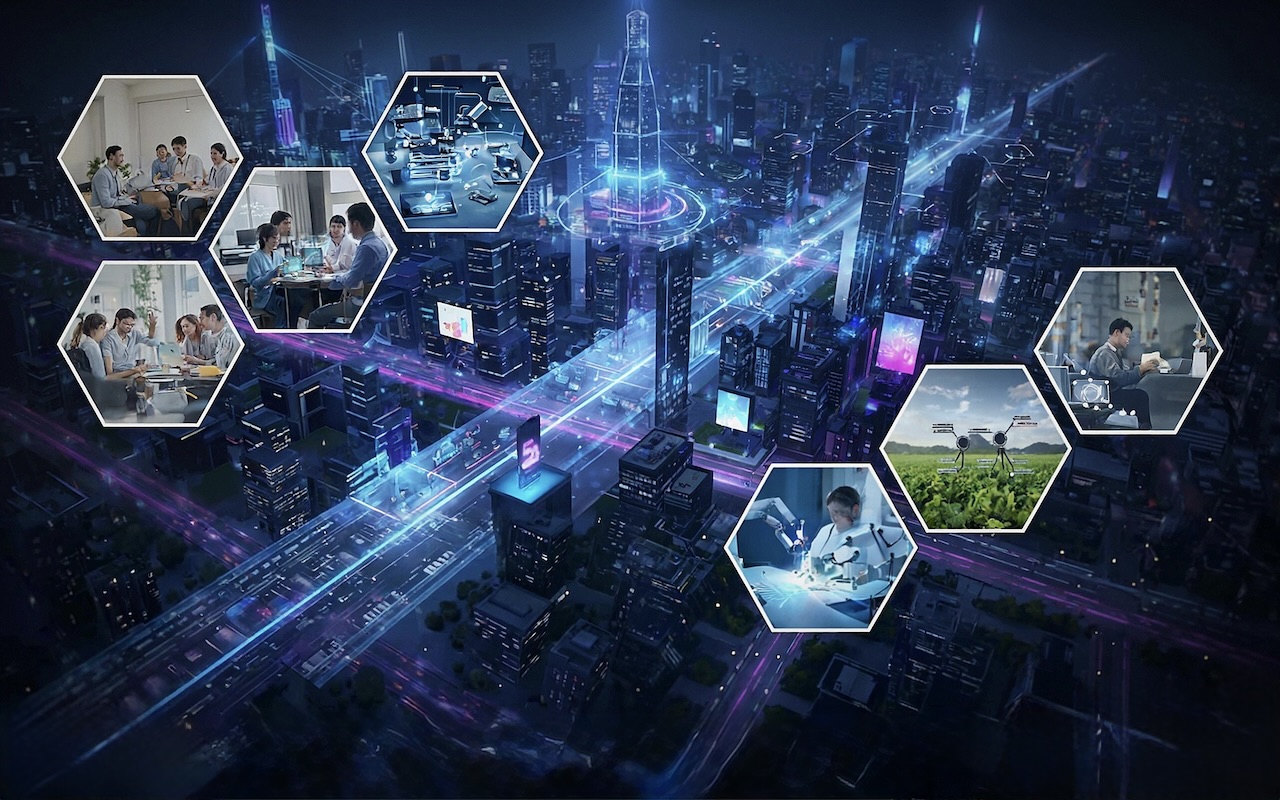
We’re in a time where technology connects almost everything including your phone, car, streetlights, even healthcare systems. Then 5G arrived, promising to make all those connections faster and more efficient. And now, 6G is on the horizon, bringing even more excitement and a few doubts. These networks could completely transform smart cities and everyday life. Or maybe they’re just the next big tech buzzwords that sound impressive but fall short. Let’s take a closer look.
The Power Behind 5G: More Than Just Speed
5G is the fifth generation of mobile networks. It goes way beyond just quicker internet on your phone. The real game changer here is how it links millions of devices all at once. And it does that with super low latency. That means the tiny delay between sending data and receiving it back is almost nonexistent.
Imagine a city where traffic lights communicate directly with cars, hospitals receive real-time updates from remote patients, and delivery drones navigate busy skies without interruption. This isn’t some distant sci-fi vision. 5G is laying the groundwork for all of it.
Speeds can hit up to a hundred times what 4G manages. So it handles huge waves of data for things like smart cities. It enables autonomous vehicles to operate smoothly, smart grids to distribute energy efficiently, and real-time surveillance systems to function seamlessly.
Even in daily life, the difference is clear. Smoother video streaming, quicker app response times, and more immersive virtual and augmented reality experiences.
6G: The Future Beyond 5G
A bunch of countries are still rolling out 5G, but researchers are already gearing up for what’s next—6G. That is set to go mainstream sometime around 2030. While 5G focuses on connecting our devices to one another, 6G takes things a step further by linking directly to our senses. It aims to blur the line between the physical and digital worlds, creating an experience that feels almost seamless.
Think of 6G as the technology behind holographic conversations, AI systems that can automate entire processes on their own, and even brain-to-computer interfaces. Speeds might hit a thousand times faster than what 5G does. Latency drops to just microseconds. All that would make the smart systems we have now look really basic.
For instance, imagine attending a concert or a business meeting where you’re interacting with a lifelike hologram. No more plain video calls. Or maybe walking around a city that picks up on where you are. It adjusts the lights and temperature automatically. Even sorts out transportation options for you on the spot.
How 5G and 6G Will Transform Smart Cities
Smart cities really need good connections. That's where 5G and 6G come in as the main players. Picture a regular day in a city running on those networks. You wake up. Your smart home tweaks the temp and lights based on how you slept. The car links up with the city's traffic setup. It picks the smartest route using real time info. Along the way, self-driving buses and delivery bots zip around. They all talk instantly to things nearby.
At the office, you hop into a virtual chat with folks from across the glove. Holograms look super real. Makes working together from afar pretty easy. Meanwhile, the energy system shifts power to busy spots on its own. No blackouts. No waste. This whole setup depends on 5G and 6G sending tons of data quickly and securely.
Impact on Daily Life: From Healthcare to Entertainment
In healthcare, 5G is already letting doctors perform remote surgeries with robotic tools. With 6G, these procedures could become even safer and more precise, with virtually zero lag. Wearable devices will monitor patients’ health in real time, instantly alerting doctors to any irregularities.
Entertainment is shifting past just streaming videos. 6G could make fully immersive experiences a reality, not just watching a movie, but stepping right into it through AR or holograms. Gaming will feel more lifelike, education more interactive, and online shopping more engaging.
Agriculture and environmental management will benefit too. Networks powered by 5G or 6G will connect sensors that monitor soil health, predict weather changes, and optimize water usage. This technology supports smarter, more sustainable resource management.
Challenges Ahead: Security, Privacy, and Inequality
Every new idea like this has its challenges. With 5G and 6G connecting billions of devices worldwide, cybersecurity becomes a major concern. More data means more entry points for hackers, and privacy risks grow as personal information moves through countless connected systems.
Then there's the digital divide. High-speed networks may first reach wealthier urban areas, leaving rural communities behind. Closing that gap requires global collaboration and significant investment.
Infrastructure is another hurdle. Building towers, laying fiber, and launching satellites for high-frequency signals costs billions and demands precise planning.
The Role of Artificial Intelligence
AI ends up being that unseen support holding up both 5G and 6G setups. These networks rely on AI to manage data traffic, detect fraud, and optimize performance automatically. The algorithms powered by AI dig into massive data rushes, spitting out decisions right then and there, faster than any person could manage.
In smart cities, AI coordinates everything from waste management to traffic flow. It’s already transforming operations on 5G, and 6G will only amplify its capabilities.
The Road to a Connected Future
5G and 6G are more than just faster internet. They’re the foundation for the next phase of digital evolution. They reshape everything we do, from daily life to jobs and even how we connect with others. Think self-driving cars, personalized healthcare, and energy-efficient cities, all powered by ultra-fast, intelligent networks.
Still, these changes won’t happen overnight. 5G is rolling out gradually, and 6G remains a few years away from real-world deployment. The transition will unfold step by step, as governments, companies, and individuals adapt to this new digital landscape.
Conclusion: A Revolution in the Making
So, will 5G and 6G truly transform smart cities and our daily lives? Absolutely, though it will take time. These technologies are building the foundation for a seamlessly connected world, where digital systems and real life operate in perfect sync.
5G is already revolutionizing industries through automation and connectivity. When 6G arrives, it will push those boundaries even further, turning once science-fiction concepts into everyday reality.
Ultimately, smart cities aren’t just about faster connections; they’re about creating spaces that are intelligent, safe, and sustainable. With 5G and 6G driving progress, that future is closer than ever.
Share this post
Leave a comment
All comments are moderated. Spammy and bot submitted comments are deleted. Please submit the comments that are helpful to others, and we'll approve your comments. A comment that includes outbound link will only be approved if the content is relevant to the topic, and has some value to our readers.

Comments (0)
No comment